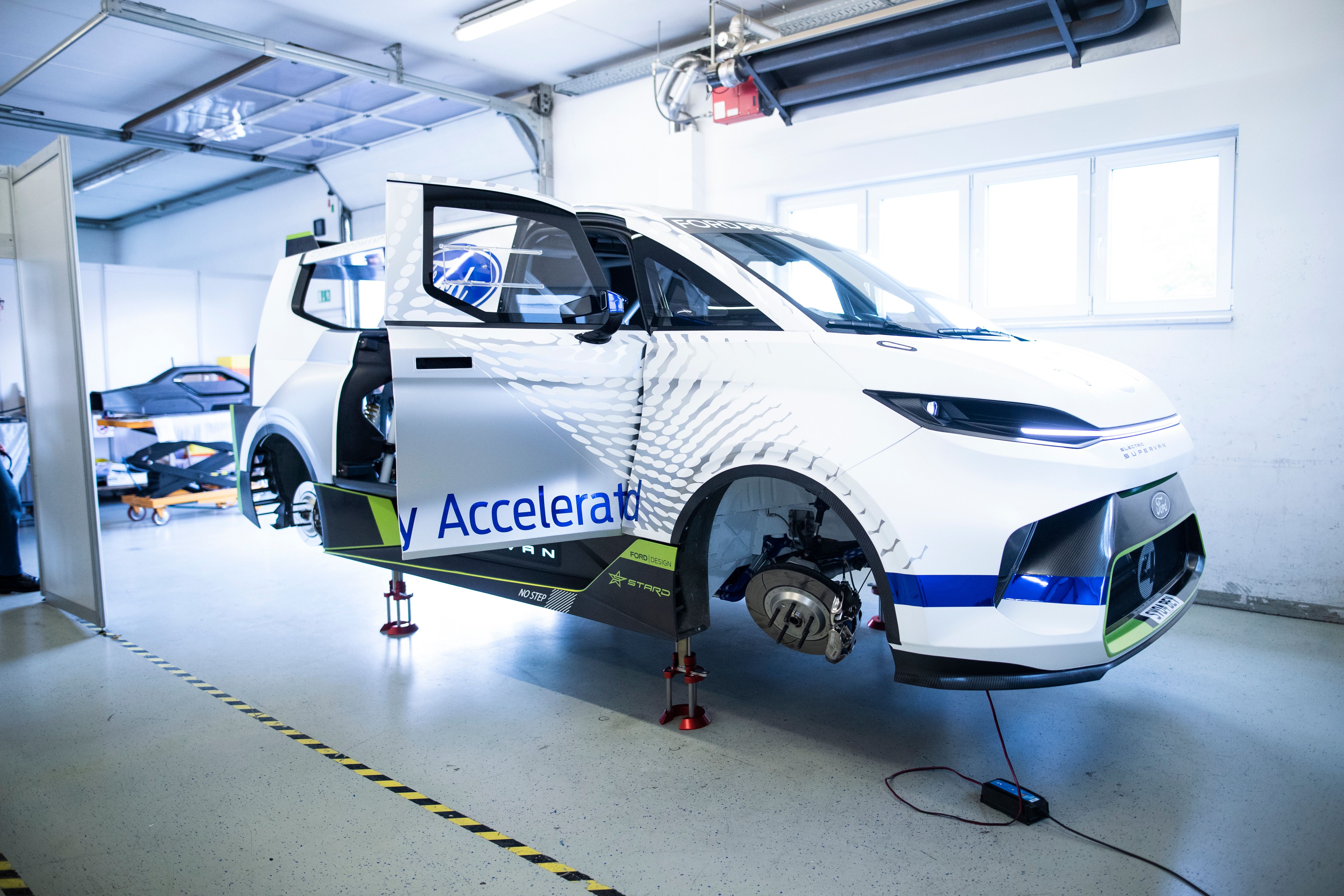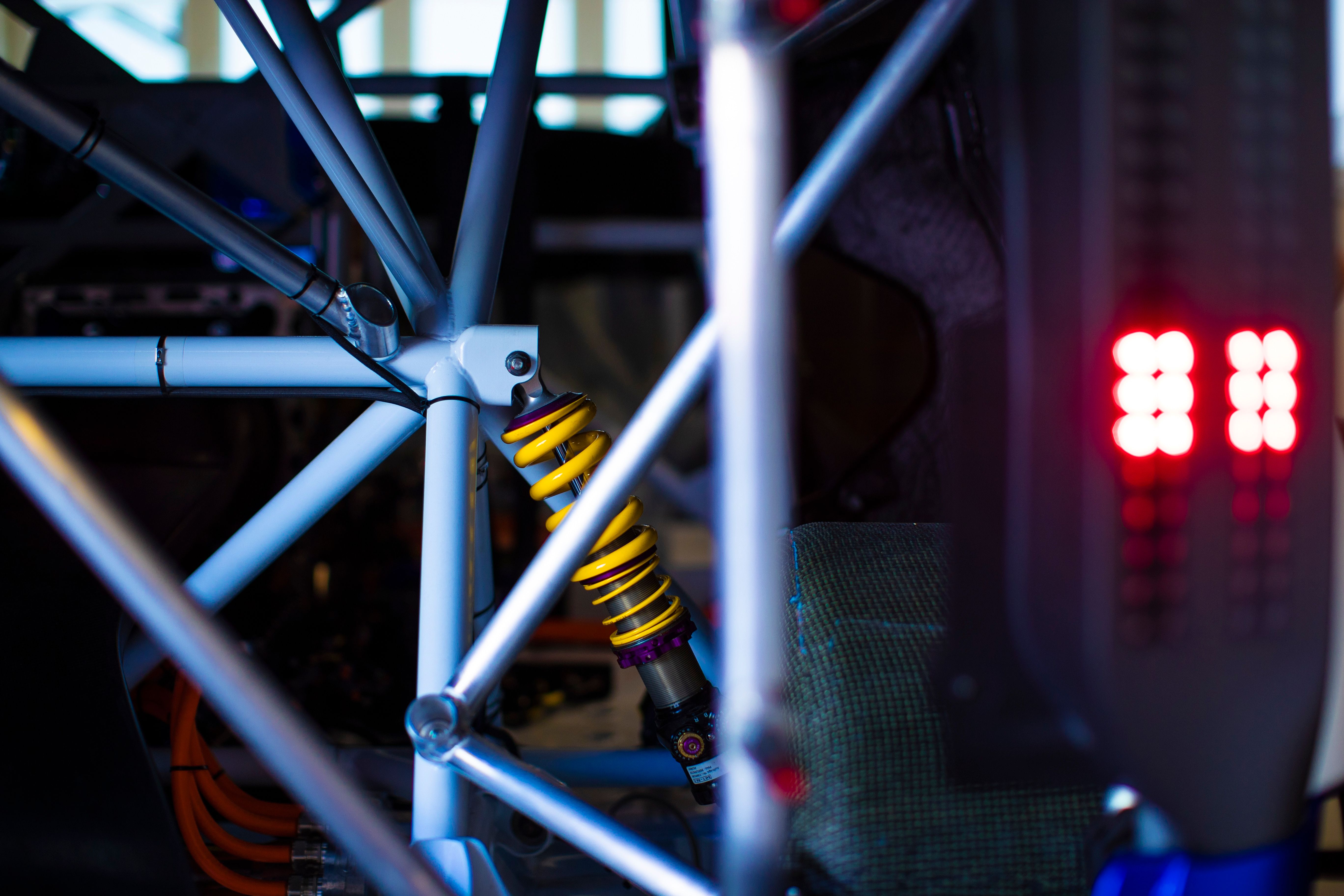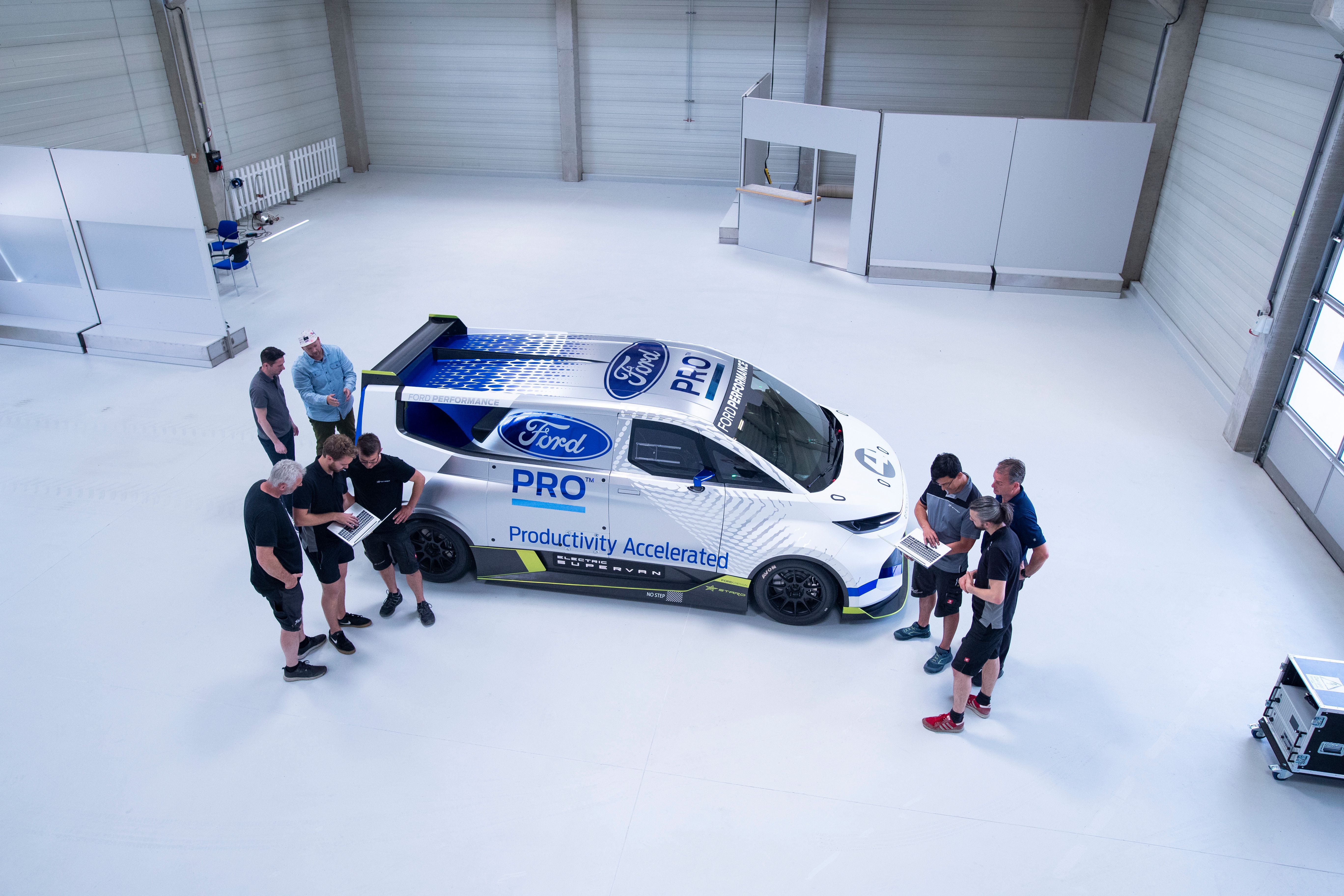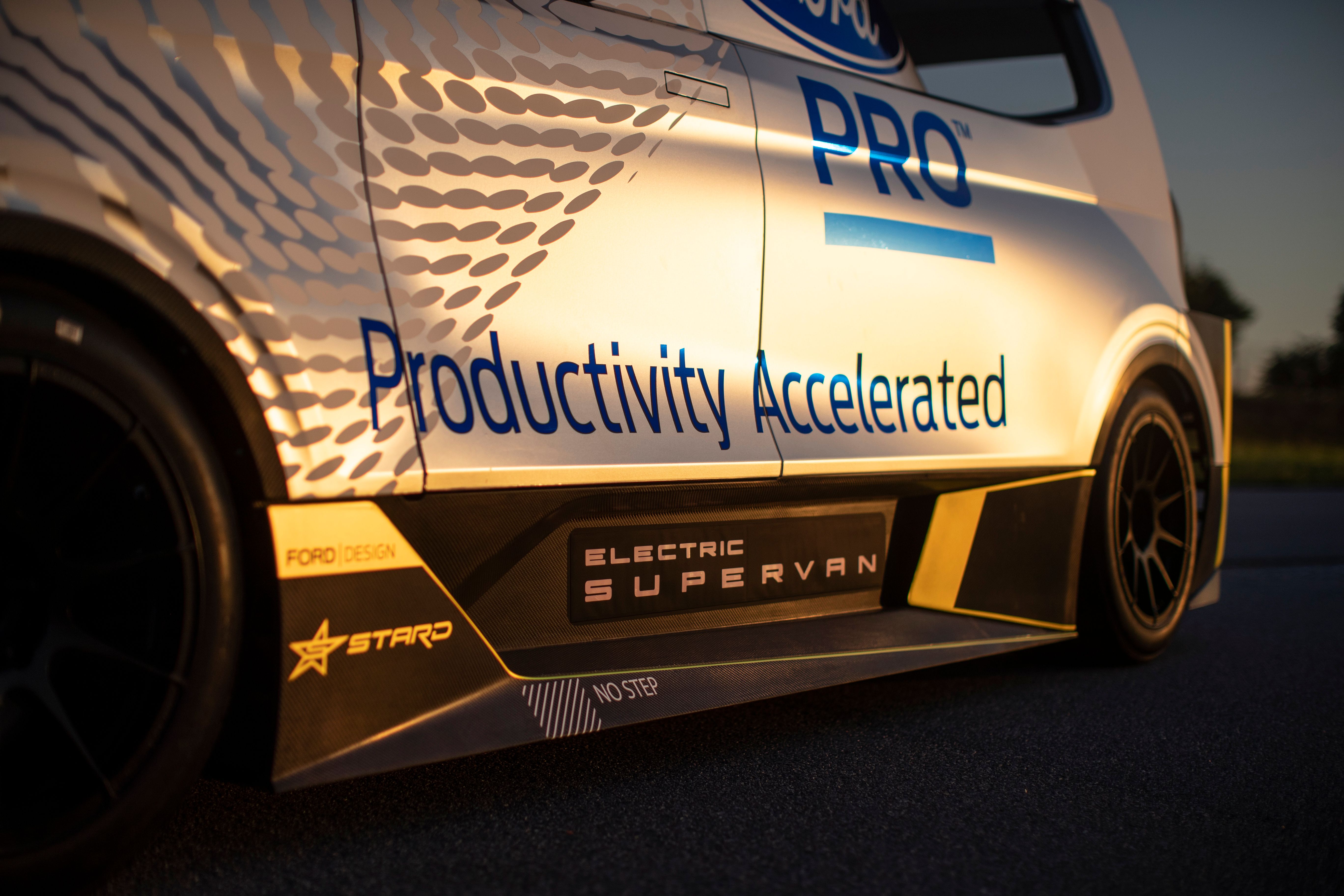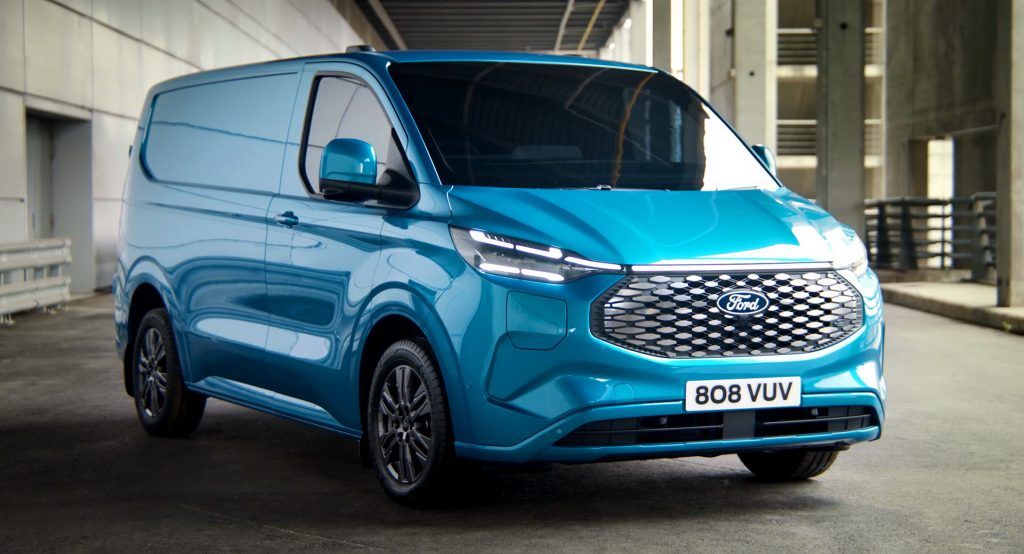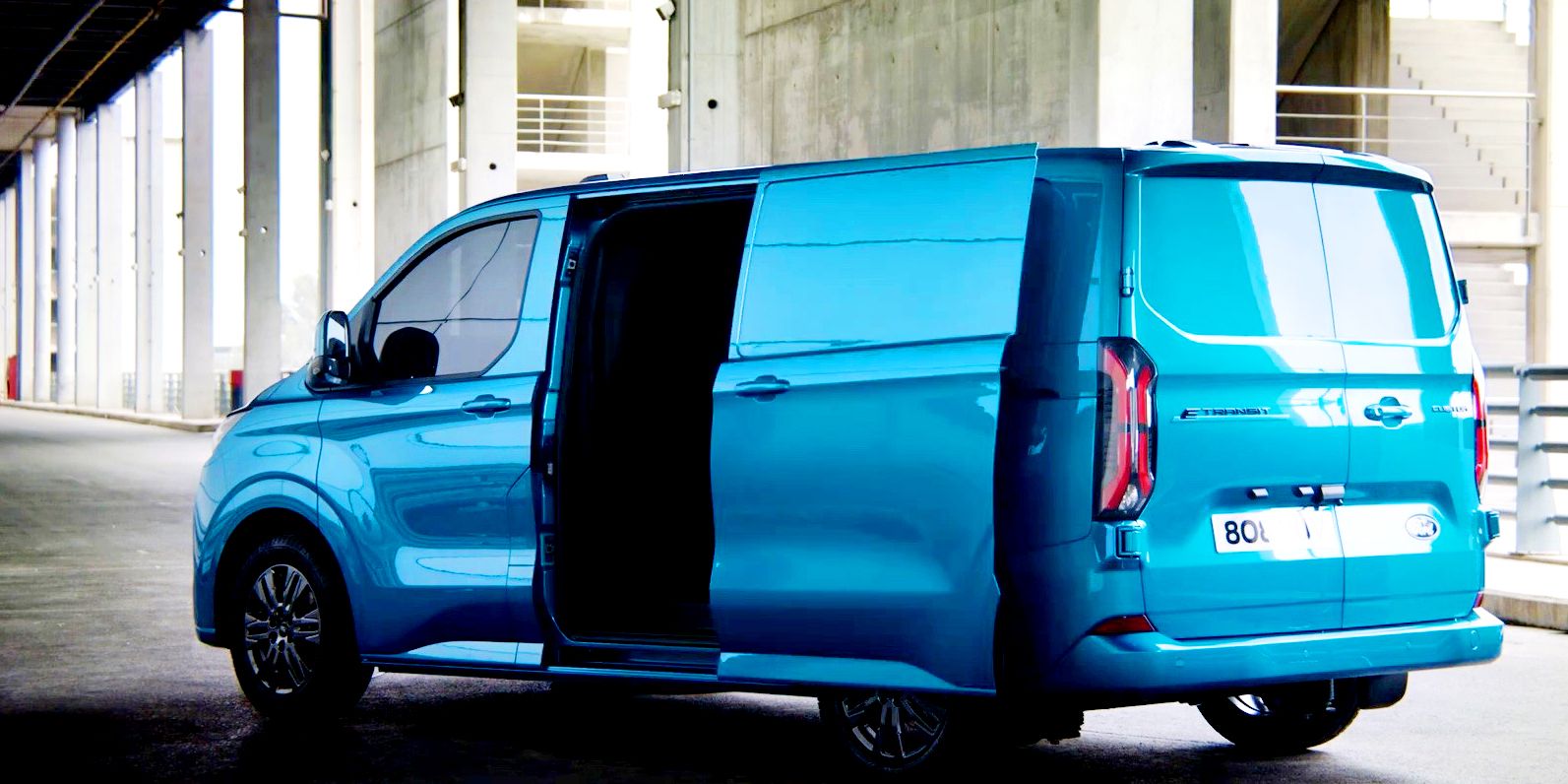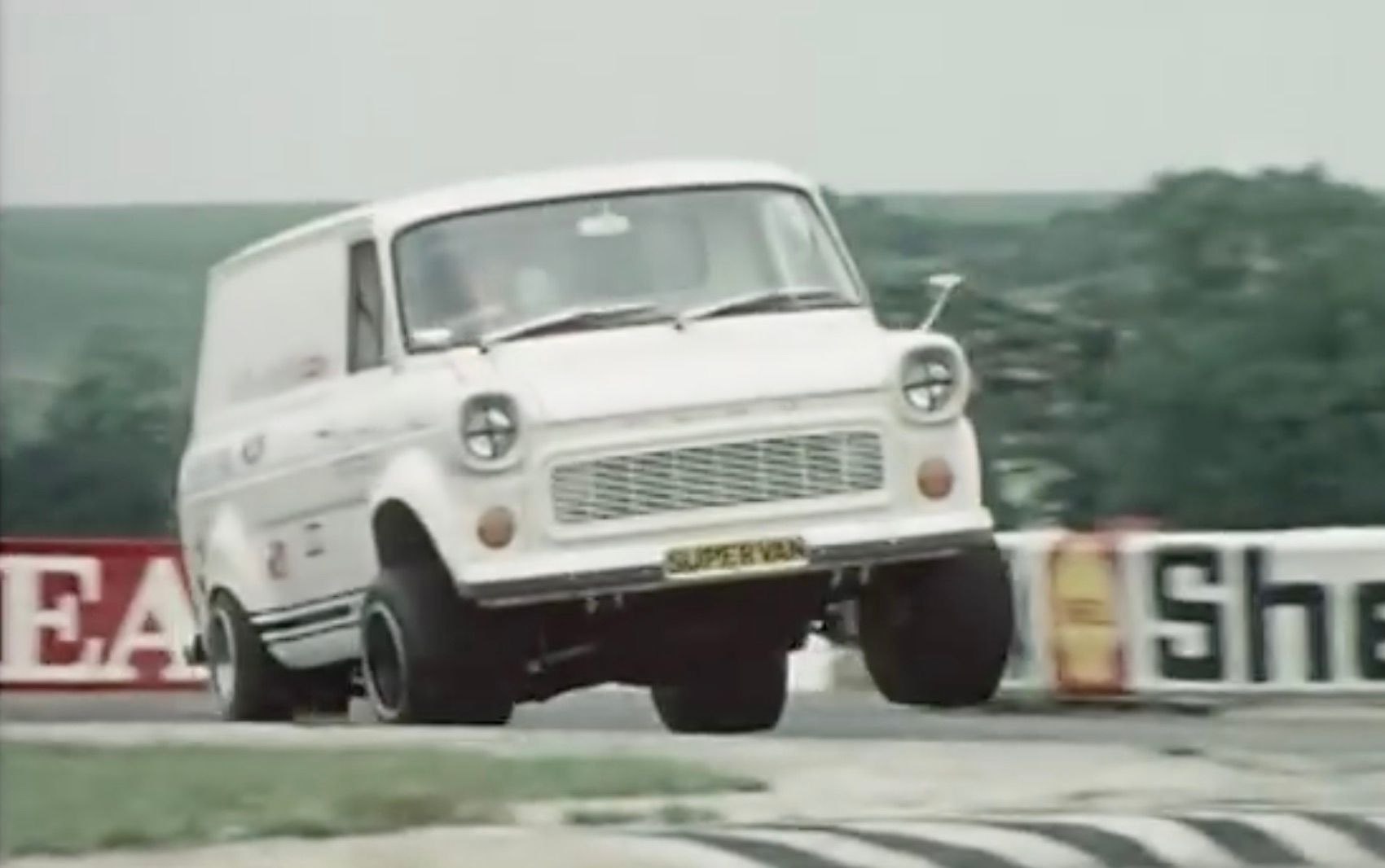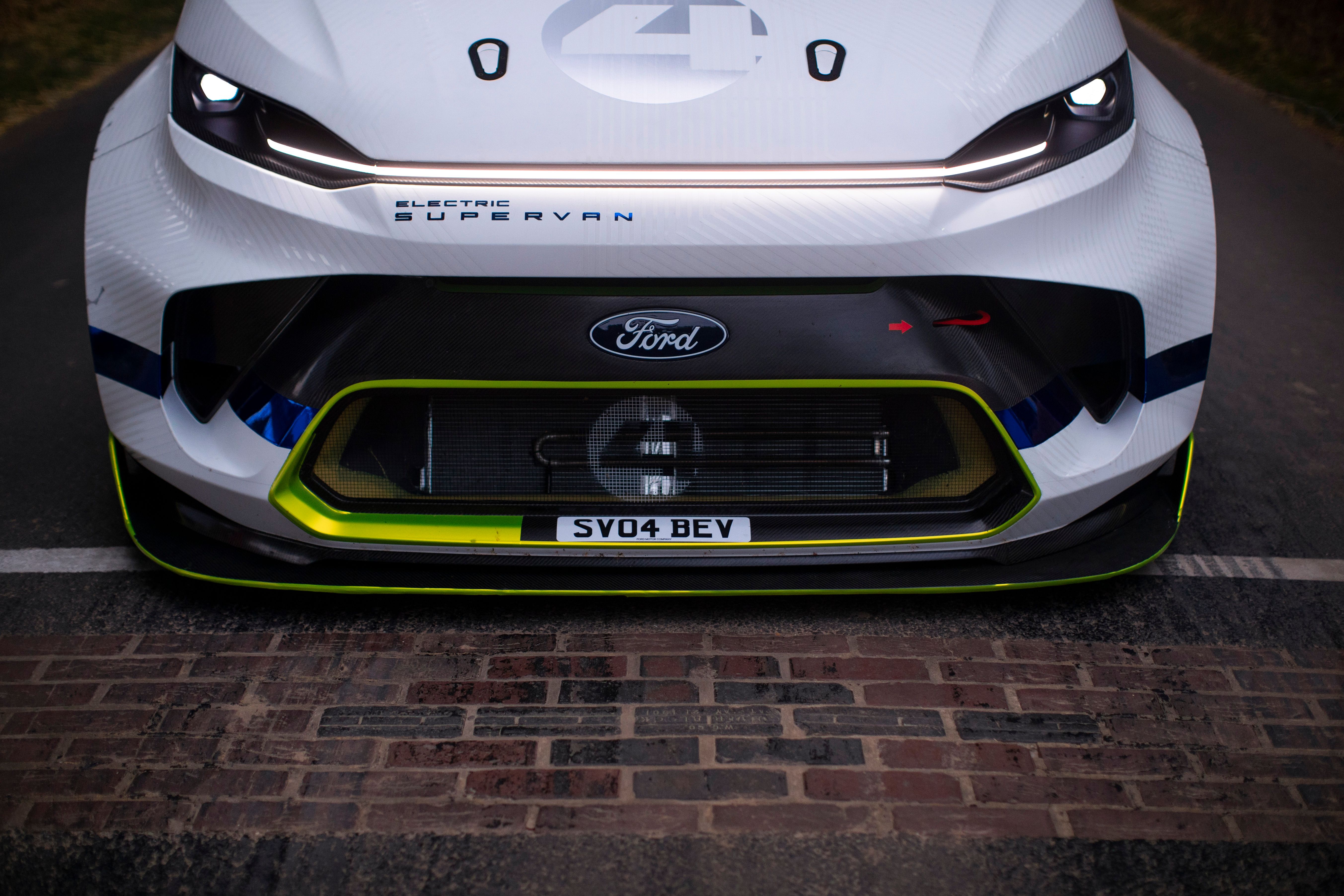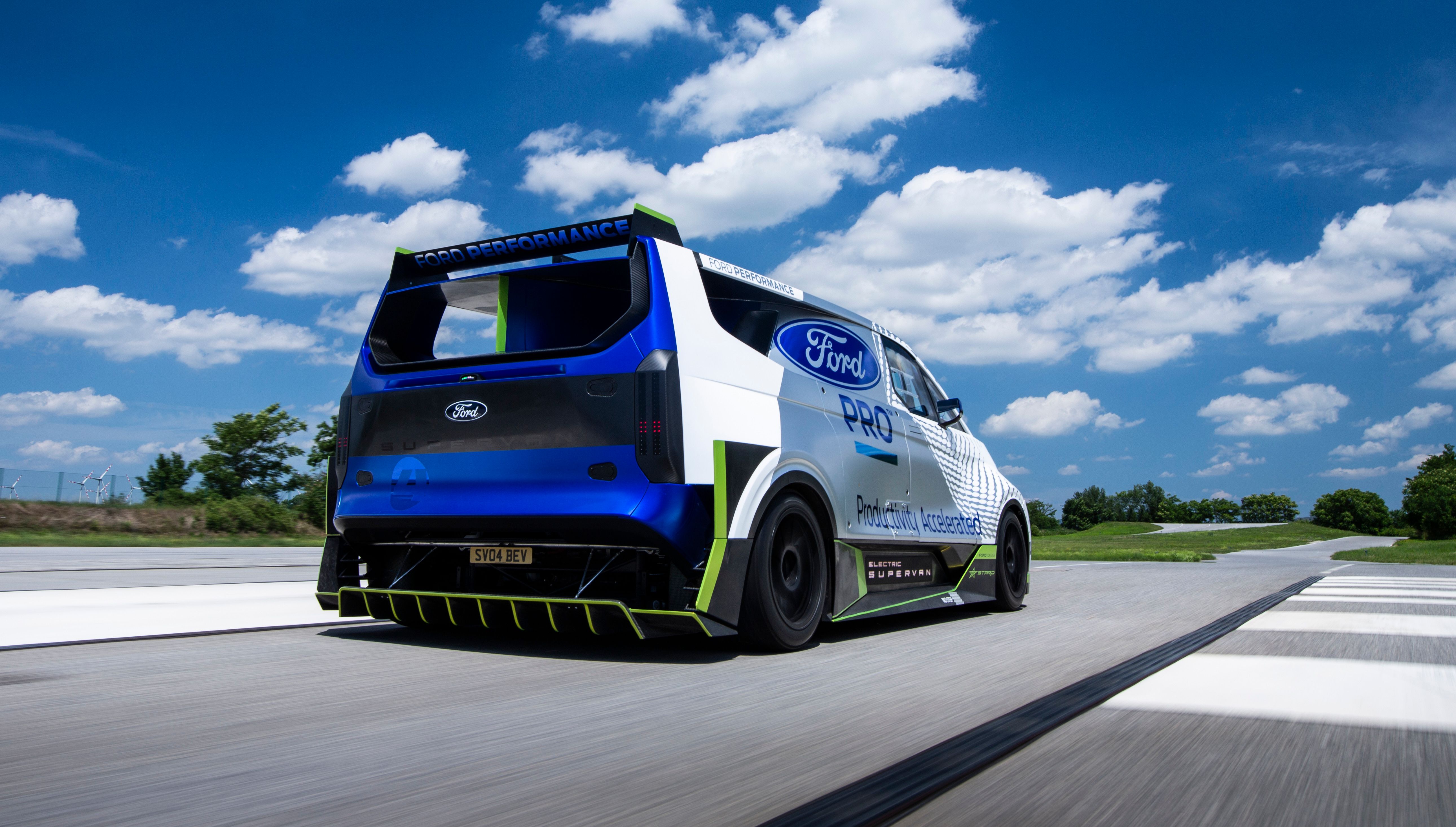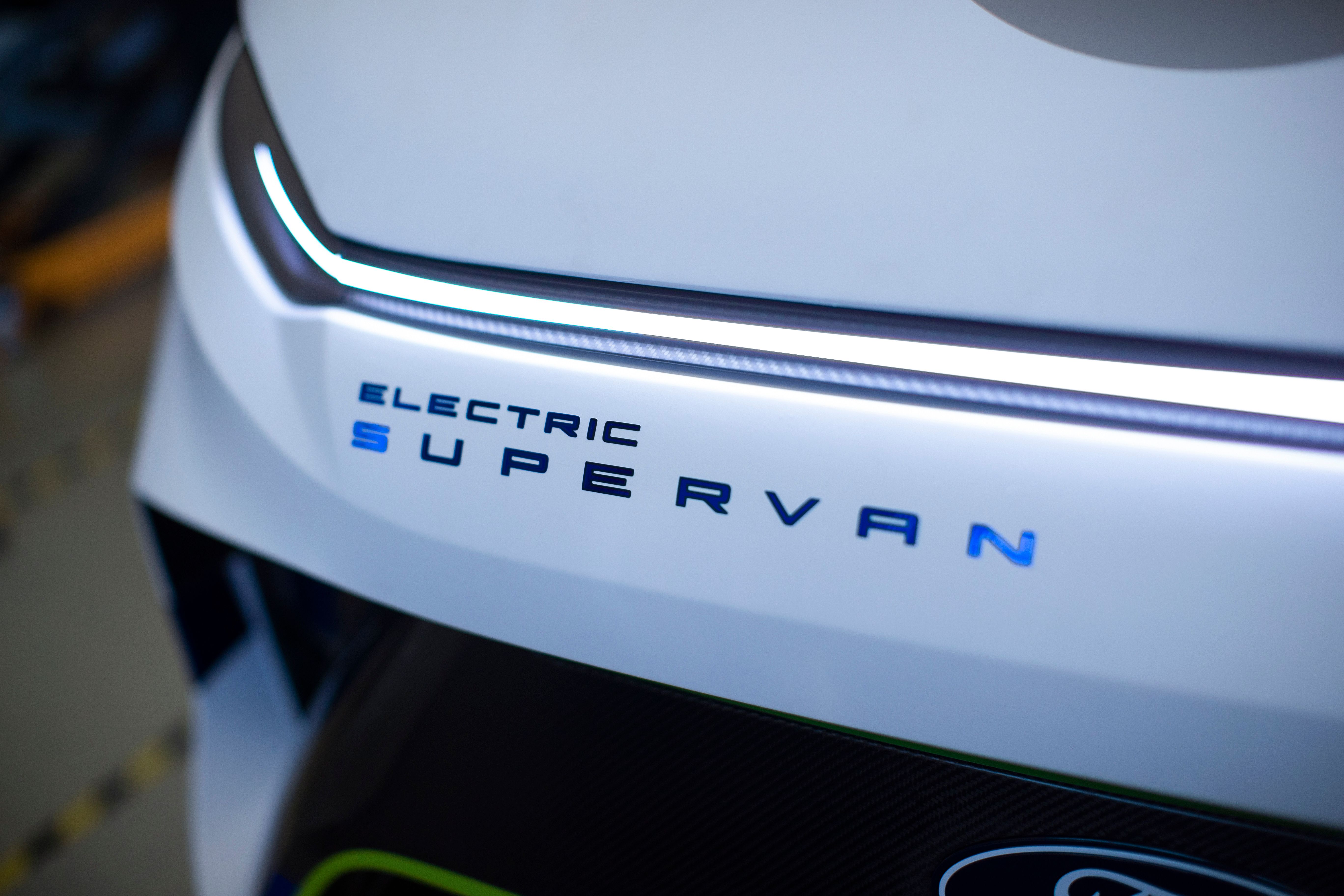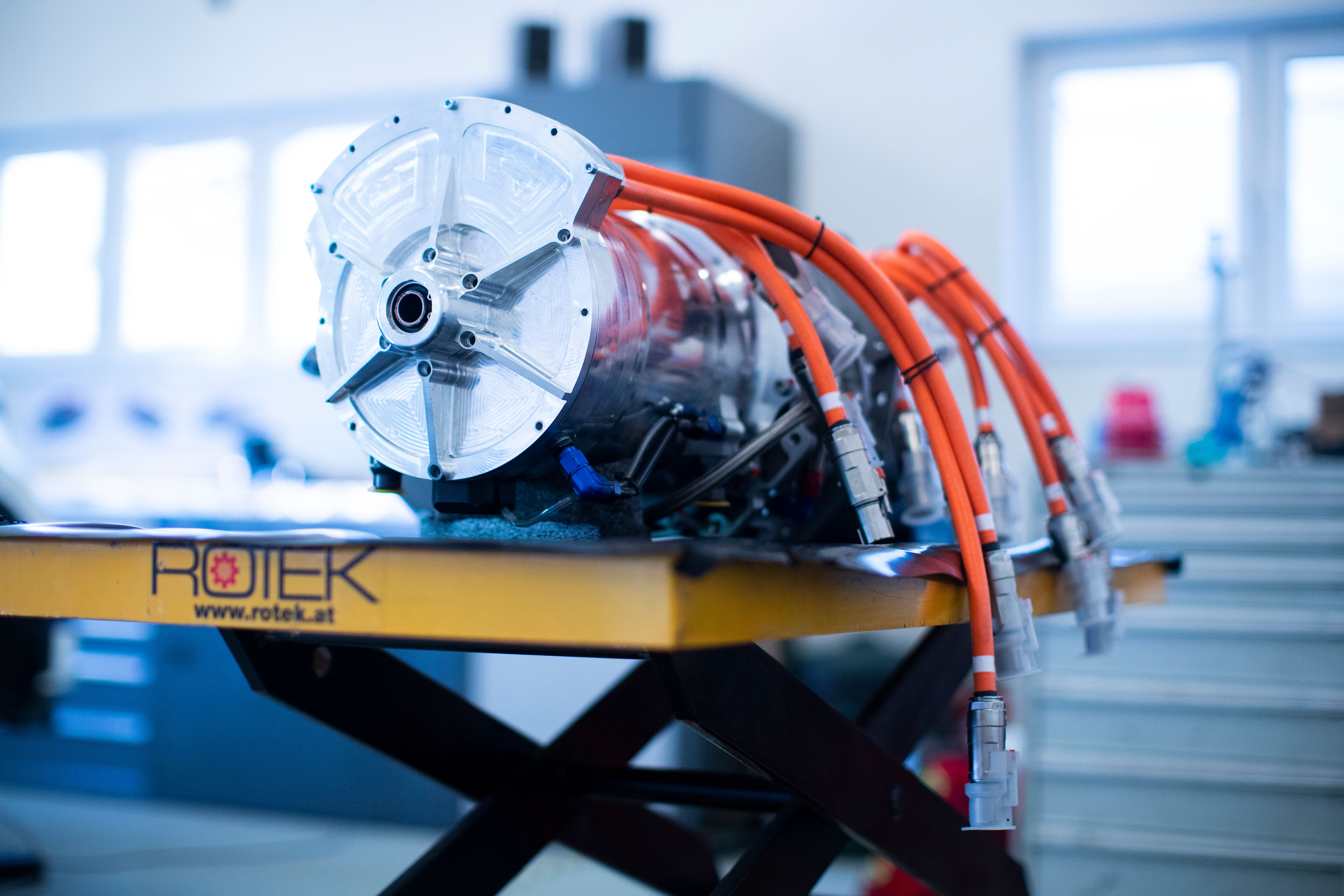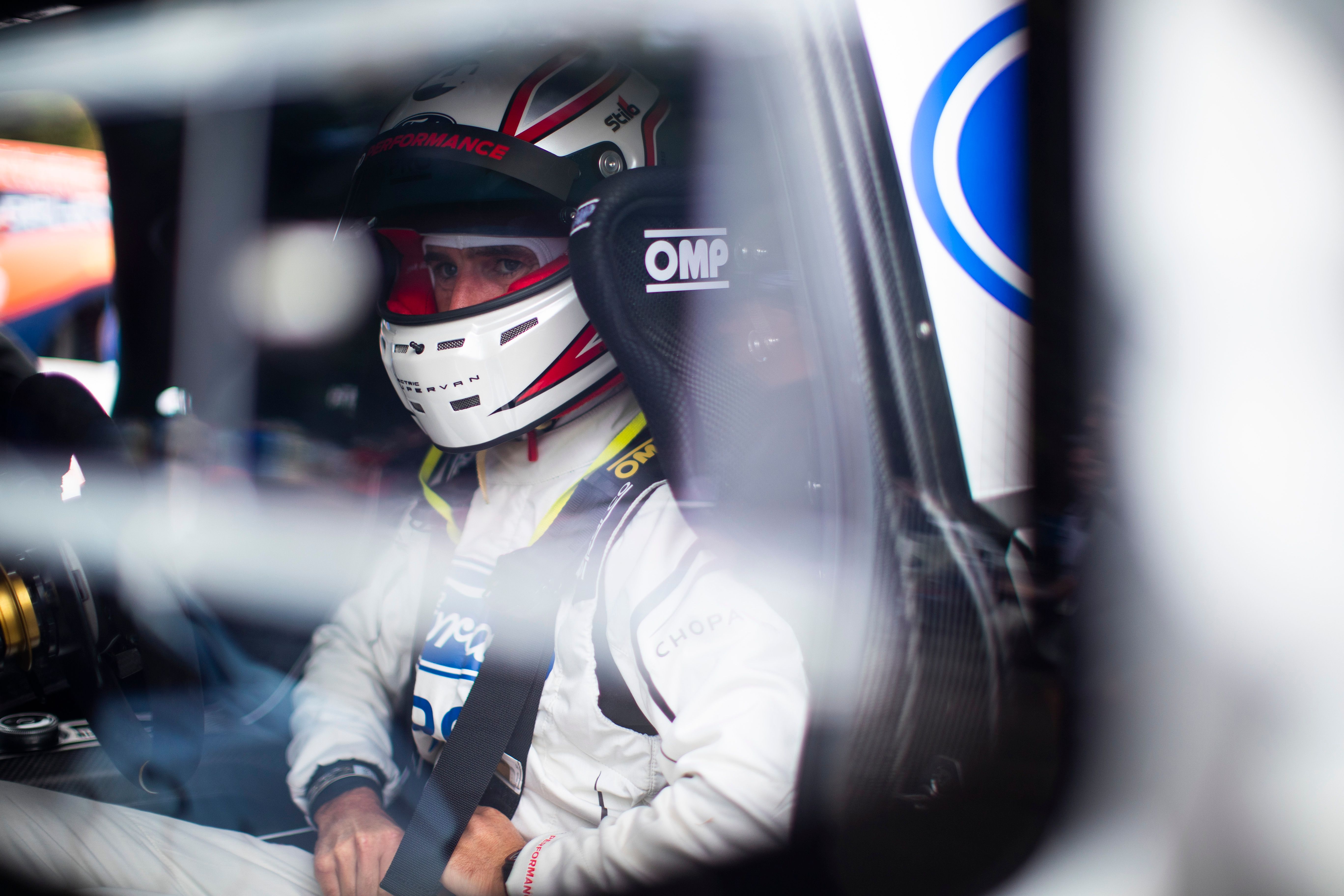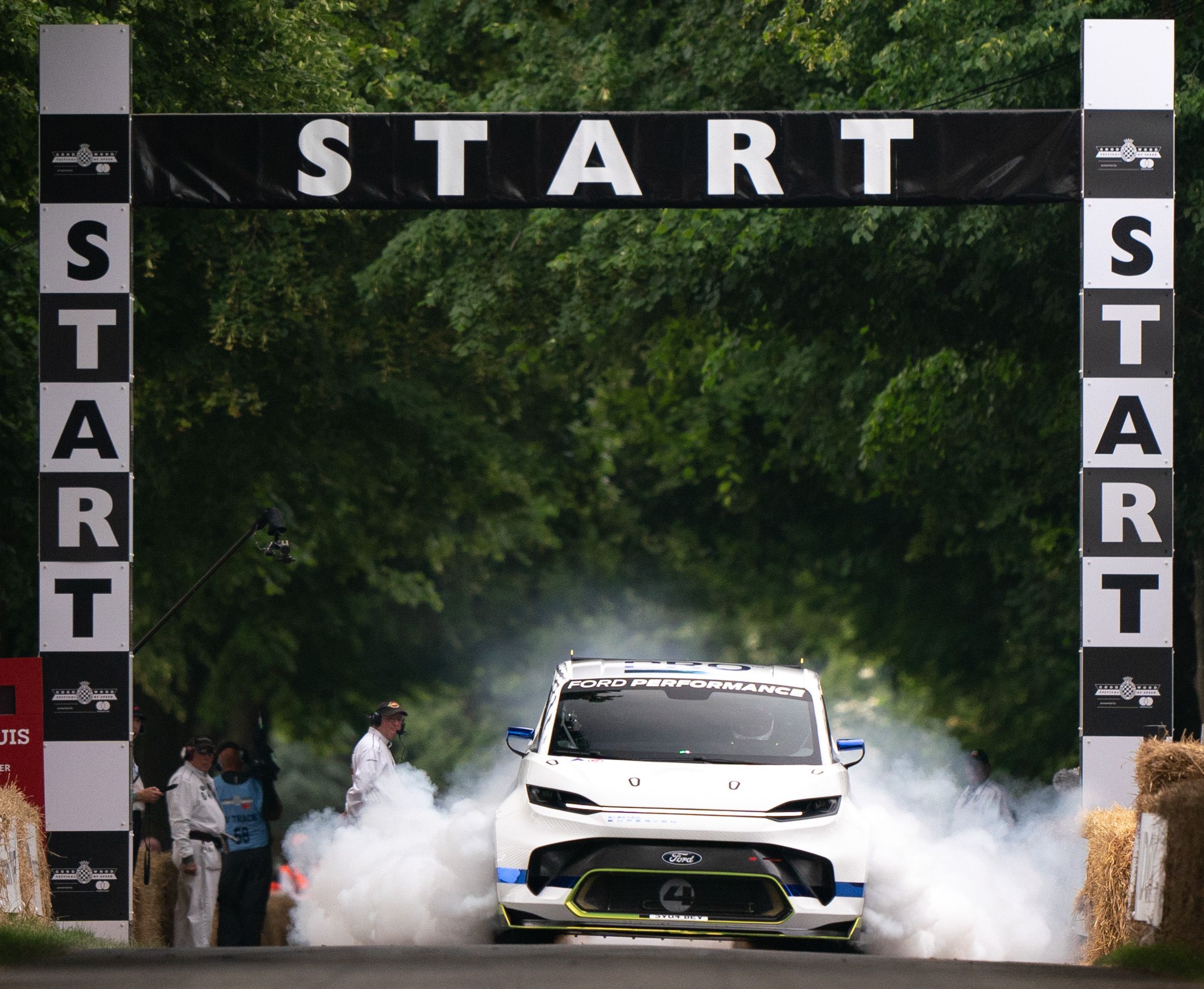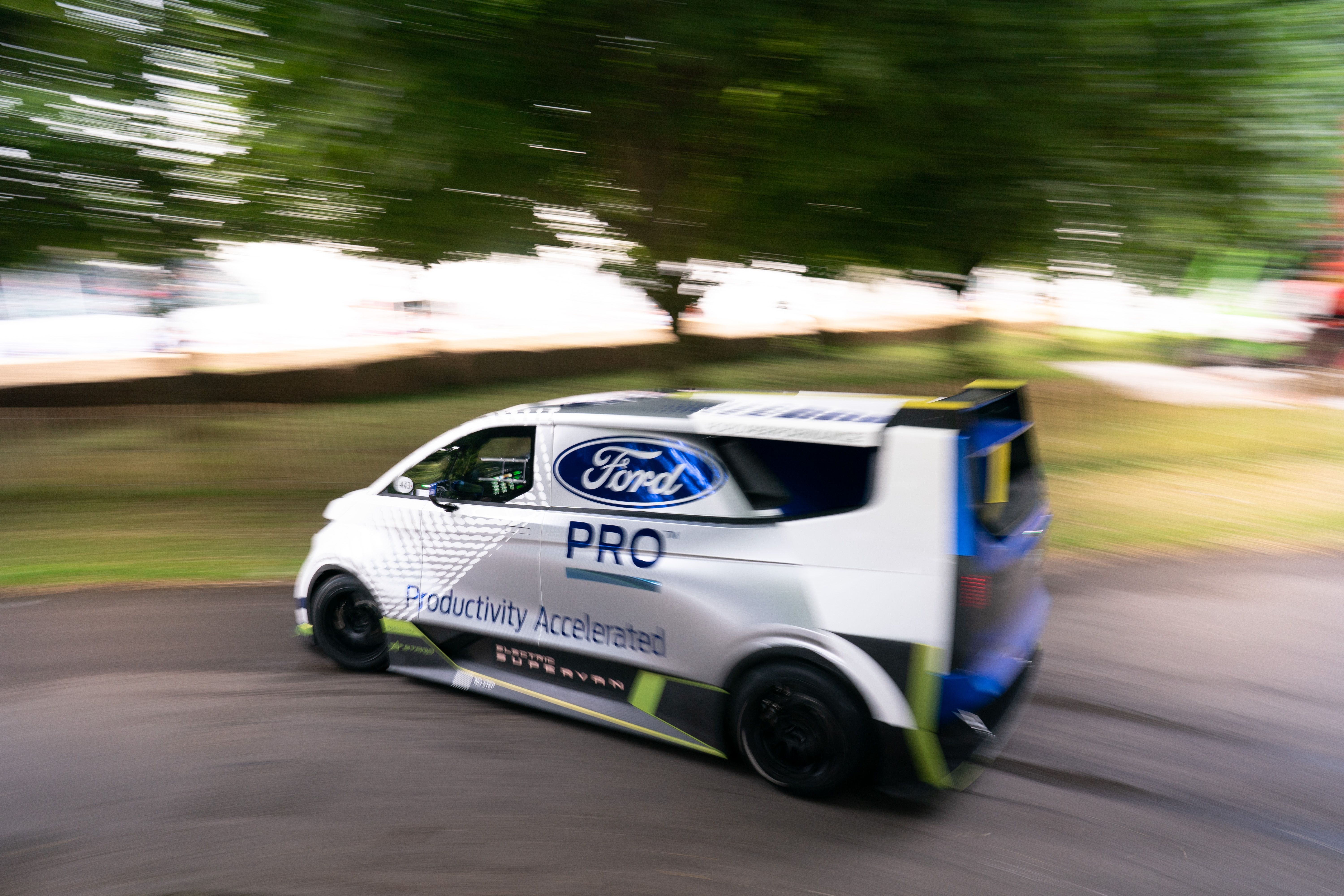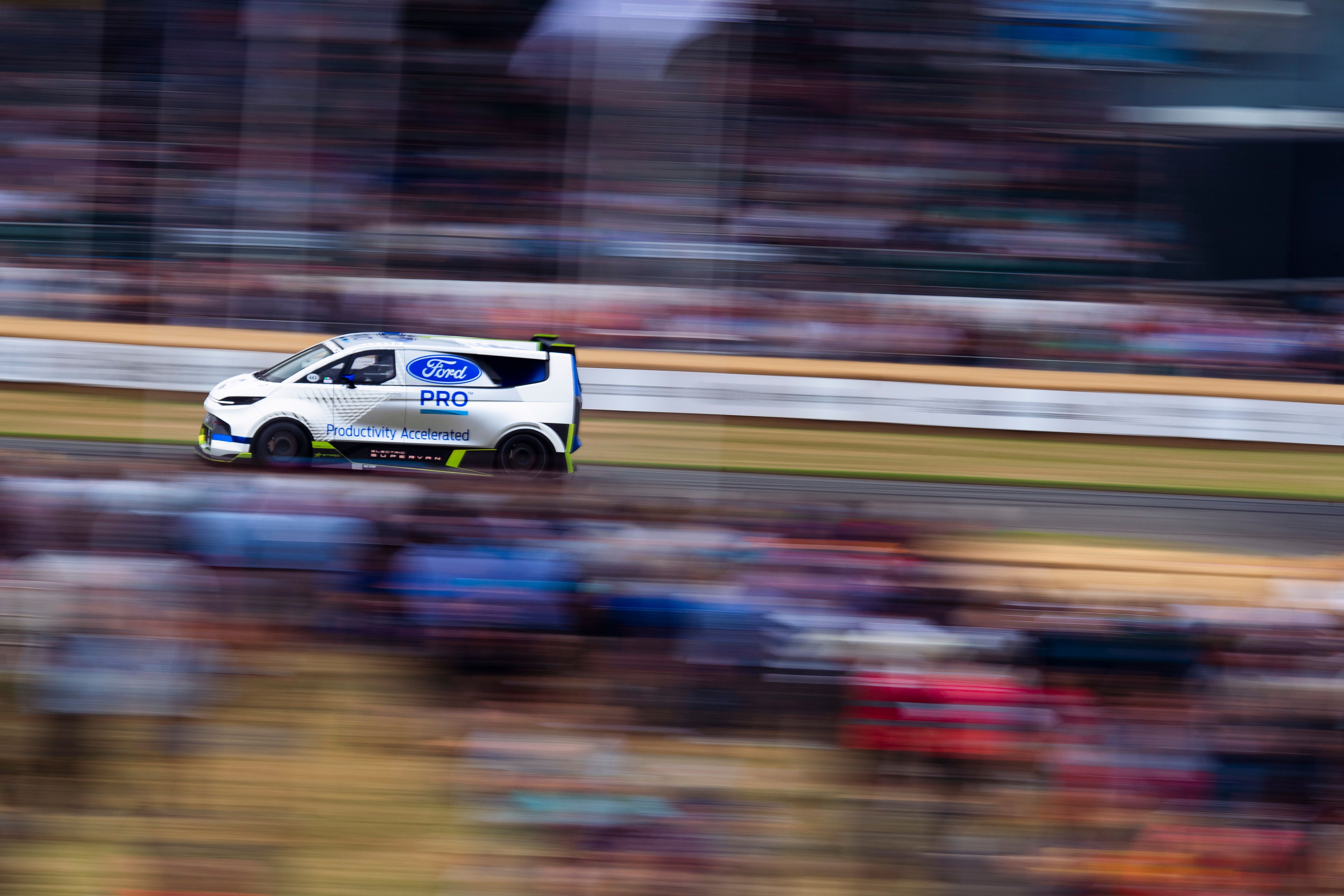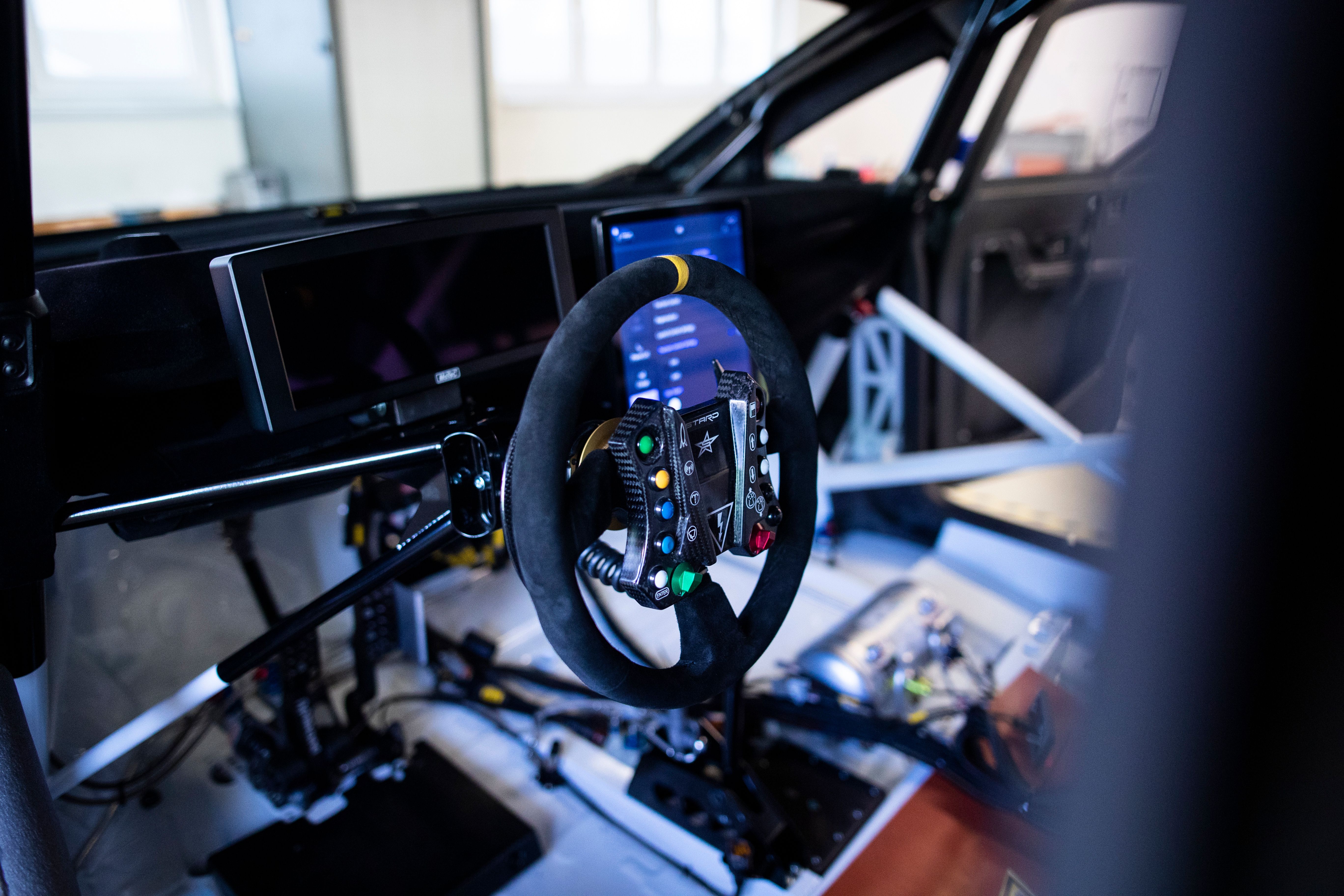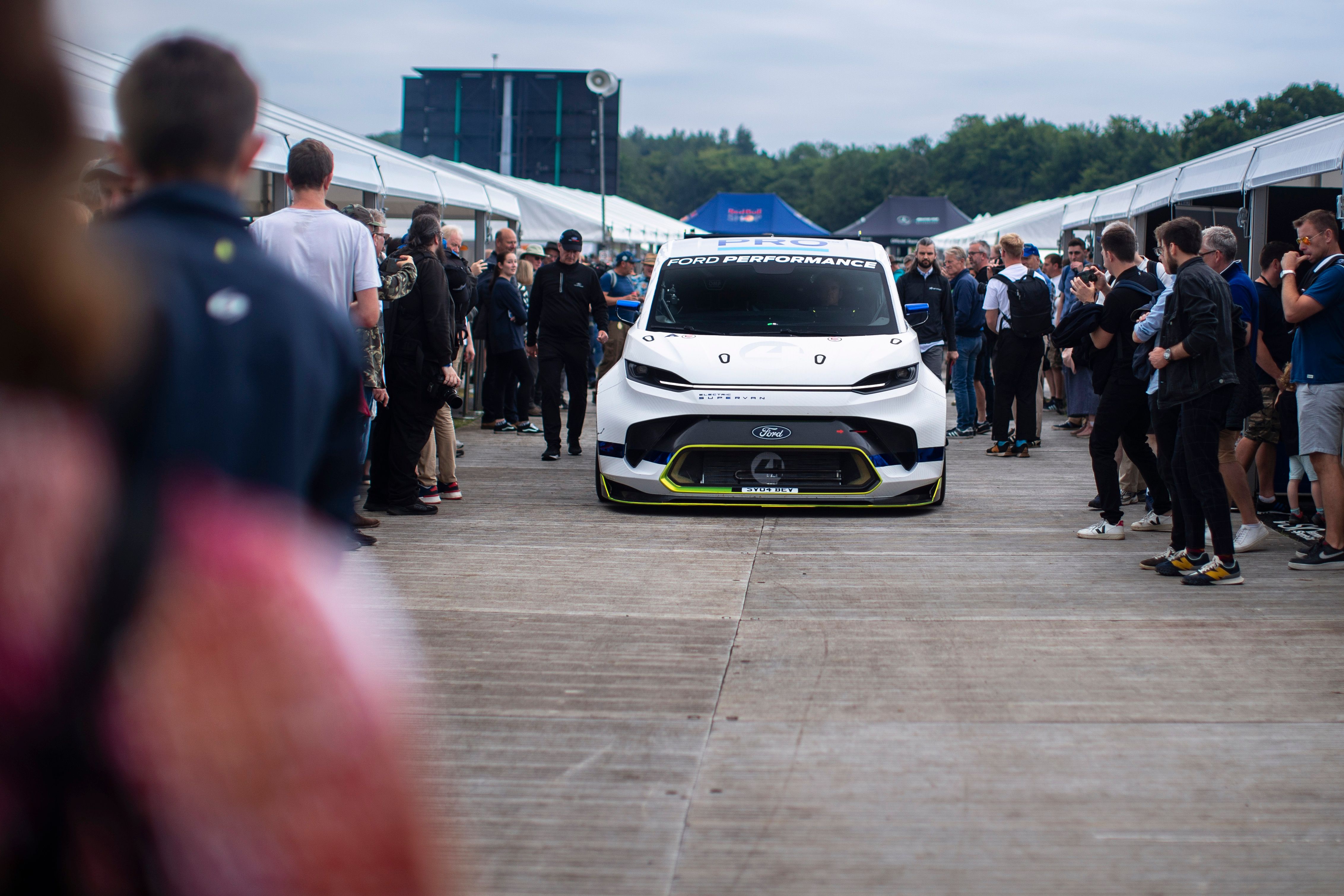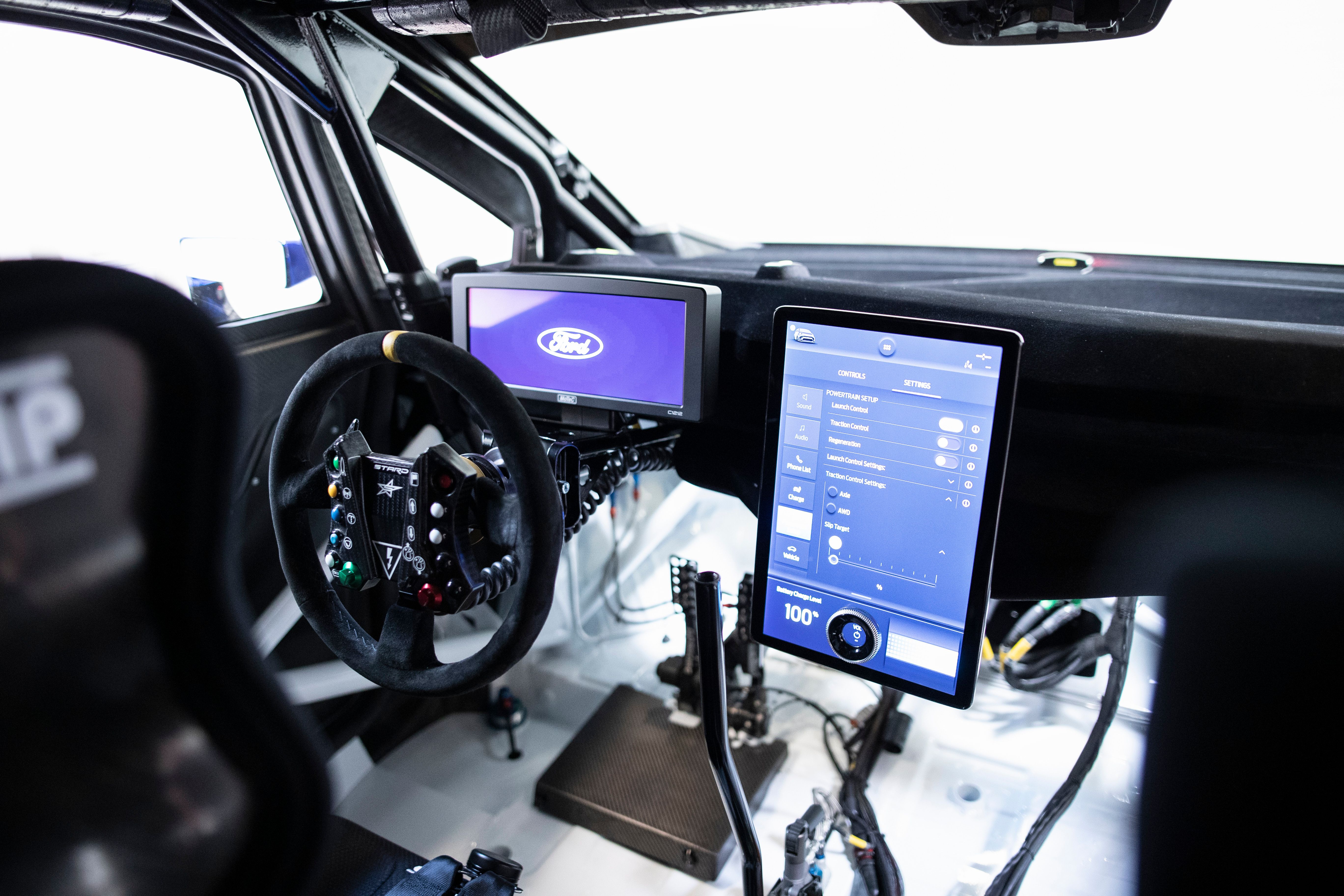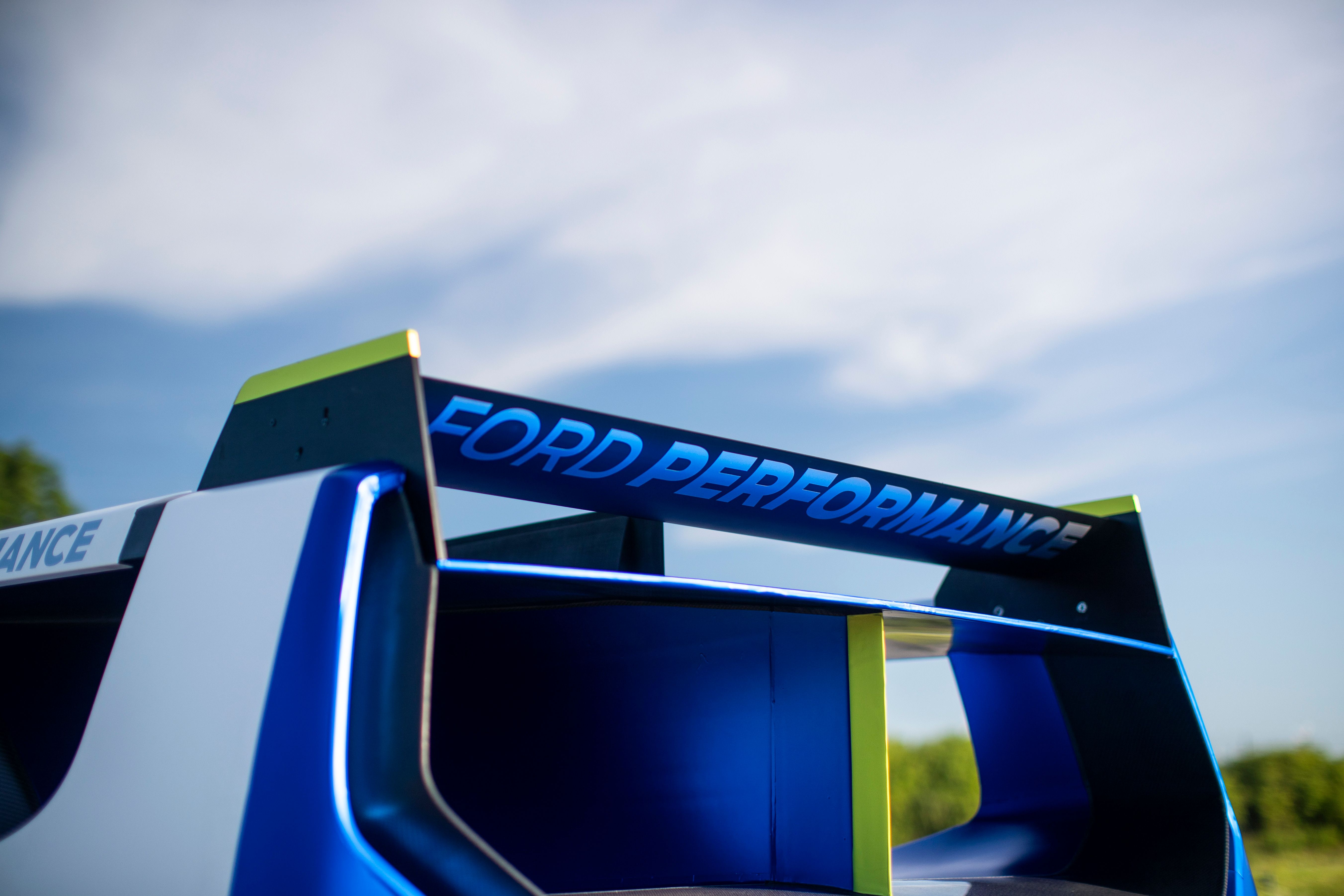It’s a bird, it’s a plane, it’s Supervan! Well, it is super, and it certainly does fly. Down the track. We’re in the age of hyper-fast electric cars. There’s the Tesla S Plaid, the Rimac Nevera, the Aspark Owl, and the Taycan with plenty more on the way. When the Bugatti Veyron debuted with 1,200 hp people couldn’t believe there was a vehicle with that much power. Since then, a number of other cars had met that benchmark, but now things have taken another leap to over 2,000 hp. Manufacturers are able to create hybrid cars that have the boost from electric motors, and now there are cars that run on electricity alone.
While it isn’t crazy to believe that a sports car would pull it off, or even a sedan, that a van would be able to do it does certainly seem more than unusual. Perhaps even unbelievable, but Ford has made it a reality. It arrived at the Goodwood Festival of Speed on June 23rd, and immediately became a sensation. With its blue and neon green color scheme, it’s impossible to miss and too much to ignore.
Here are ten facts that help you understand just what it is that Ford has pulled off.
10 Built In The UK
The UK has a history of building fast cars, with brands like McLaren, Jaguar, Lotus, and Aston Martin all British. When people think of Ford, it’s Detroit that comes to mind first. Their other fast cars, like the Ford GTs, Mustangs, and the RS200.
They may have production plants in other countries to build their products, but the whole project was developed there. But because of the Transit’s popularity in Europe, all of the Supervans were British projects. The good news is that even though the four is built across the pond, it is a left-hand drive car.
9 Developed In Secret By The Ford Performance Division
For people who aren’t aware, Ford has a special division dedicated to producing their performance road cars. They have worked on projects like F-150 Raptor, Shelby GT500, and Focus RS.
They also got help from STARD, Stohl Advanced Research and Development. They are based in Cologne, German, and built in Groß-Enzersdorf, Austria, and specialize in building racing and electric vehicles. They are the company that produces the Ford Fiestas and Kia’s Cee’d cars used in Rallycross
8 Based On The E-Transit Custom
The Supervan is built on the latest generation of the E-Transit van. Unlike previous versions, the new one is electric but is still focused on deliveries and commercial use. They are available in three roof heights, three body lengths, and the choices of a Chassis Cab, a Cutaway, or a Cargo Van. The two reclining bucket seats up front is the only configuration offered.
They are fully electric with a single-speed transmission and a RWD electric motor. The battery is a 68kWh lithium-ion battery that gives the vehicle a range of 126 miles and a top speed of 75mph, depending on cargo load.
7 Actually Ford’s 4th Supervan
Before the newest Supervan, Ford had built three others. Supervan 1 debuted in 1971 with the chassis of a GT40 and a mid-engine V8 with a top speed of 150mph. Supervan 2 was built in 1984. Its body was the standard Mark II Transit but was made with fiberglass. It was lowered and fitted with a front air dam, large side air inlets, a high-mounted rear spoiler, and a Cosworth DFL engine.
Supervan 3 came out in 1994. Like the Supervan 4, it was built to show off a new model of the Transit, as opposed to the other two that were made with outgoing models. The 3 also existed for the longest time and was used as a showcase until 2001.
6 A One-Off
Unfortunately, this Supervan is only a concept vehicle, and there are no plans to build any more of them. While there’s no doubt the Supervan is exciting, the price of production and lack of need for this type of vehicle, and practicality will make it a on-off
Like many car manufacturers that build concept cars to demonstrate what their engineers can do, it was made solely to demonstrate how far they’ve come in producing passenger and commercial vehicles, not to mention a little fun.
5 Bespoke Motors
Anyone who’s ever charged their cell phone and felt it get hot knows the byproduct of lithium-ion batteries. Now consider that there are 5.4 watt-hours in a smartphone and a 50kWh battery is over 9,000 times as strong. You can imagine that it will take some serious cooling to keep that battery from losing power with every charge and to keep it from exploding. That’s why electric cars have special liquid-cooled batteries encased in a carbon fiber box.
To charge the battery in the Supervan takes 45 minutes at a fast charger, which is faster than average for an electric car to charge up fully. Teslas do it more quickly because they use superchargers, but the Supervan doesn’t support those.
4 Designed To Race
It’s pretty unusual to see a van doing laps at the racetrack, but there have been examples of it, like when Sabine Schmitz did a lap in a standard Transit in 10:08 and the VW T5 Van modified by Revo Technik that did it in 9:57 seconds.
The T5 was stripped down for weight but had 1500 fewer horsepower than the Supervan. There’s no guarantee it would be able to beat the T5, but with carbon fiber parts, a large rear wing, and numerous air splitters, it wouldn’t be out of place at the track.
3 0-60 In Under 2 Seconds
Unlike combustion vehicles that need to be revved up first, electric cars can immediately use all of their power. Even a Bugatti Chiron needs 2.4 seconds to hit 60mph, and the Lamborghini Huracan Evo needs 2.8 seconds.
In relation to electric cars, the Audi e-tron GT RS can get to 60mph in 3.1 seconds. The Porsche Taycan Turbo S takes 2.8 seconds. You’ve probably heard stories about how Teslas accelerate so quickly with launch control that you violently get pushed back into your seat, sometimes painfully. It gets to 60mph in under 2 seconds, but remember that the Supervan is a van weighing considerably more.
2 Five Selectable Drive Modes
In many sports cars, you’ll see three or maybe four driving modes, such as comfort, sport, and track. These options adjust the dampers, throttle response, shift timing, and traction control. The Taycan has four Range, Normal, Sport, and Sport Plus.
The Supervan has five. Road, Track, Drag, Drift, Rally does what you expect them to do based on their names. There’s also one more choice, Tyre Cleaning, that brakes one axle and spins the other to clean and warm the tires before performance runs, but it’ll also do some impressive burnouts. This is from a company that knows a thing or two about revving engines.
1 A Cabin Of A Race Car
Inside you’ll also find a setup that’s built for speed. It has a full roll cage, FIA certified racing seats, and the touch screen from the Mustang Mach-E that controls the performance features and powertrain, as well as accesses to racing telemetry.
Additionally, because it’s hooked up to the cloud via its own Wi-Fi hotspot, it can send information about the battery usage and location back to the pit or wherever the support staff are and can receive information about route planning and driving lines.
